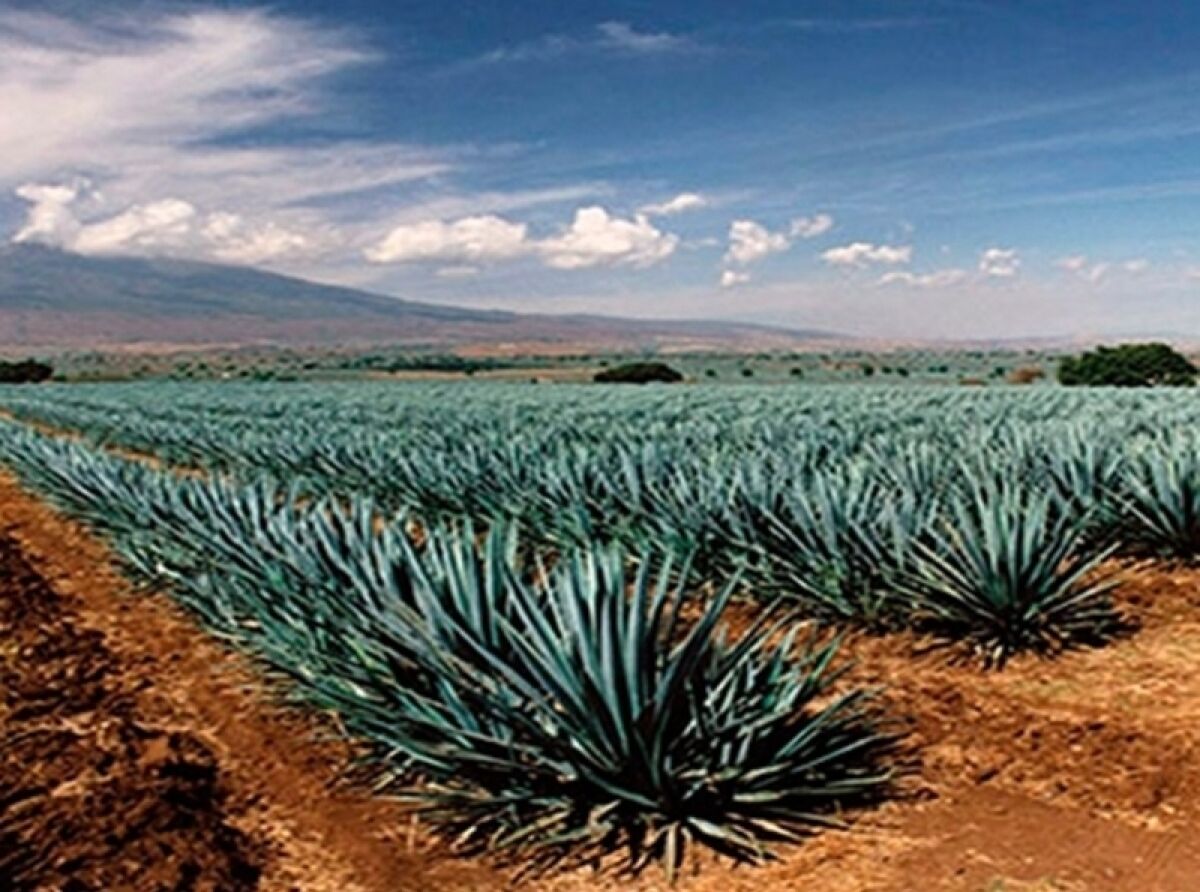Today the blue agave fields, with their so characteristic appearance, occupy a great central strip of Jalisco’s landscape. The industry, directly or indirectly, involves some 300,000 people,
all of them proud to participate in the making of a product so deeply ingrained in the life of Western Mexico, and pleased to offer this absolutely Mexican drink to the rest of the world.
It may take ten years approximately for the agave plant to reach its peak ripeness. After this term the plant is capable of providing the best honeys and is ready for the jima.
The “Jima” consists in cutting off the leaves of the plant down to its base, to keep only the head or heart of the agave.
The production process begins with agave heads baking and mashing. Baking is done by water steam pressure, either in traditional masonry ovens or autoclaves. Baking time in a masonry furnace is 48 hours, compared to 12 hours in the autoclave. The purpose of this stage is to convert inulin (agave sugar) into sugars such as fructose and sucrose, which are readily fermentable. At the end of cooking, the baked agave is transported to mills where it is shredded and mashed.
Water pressure is applied on baked and mashed agave heads to extract the sweetness, and then the pulp is squeezed out. The honeys are then separated to continue the manufacturing process, while the pulp is discarded.
The honeys extracted from baked agave heads are captured in tanks. They are then transported by pipeline to the tubs of formulation for Tequila production or for 100% agave Tequila fermentation, as the case may be.
Formulation consists of mixing a minimum of 51% agave sweetness, with a preparation of no more than 49% percent of other honeys, (standard sugar, brown sugar, glucose, fructose, molasses, etc.) and then these are fermented together.
Fermentation is one of the most important stages of the process. In this stage the sugars are transformed into ethyl alcohol and others in smaller proportions. Fermentation is performed in big stainless steel containers and honeys, also known as must, are added. Then water, yeasts, and nutrients for fermentation are added.
Fermentation time varies depending on environmental temperature and this, in turn, changes with each season. Under low winter temperatures, fermentation can be prolonged more than 24 hours. This process has a pattern similar to any organism development curve, representing firstly an exponential growth, then a second lineal phase, and a late-stage decrease. Any product fermentation implies alcohol, carbon dioxide, water and energy released as heat. Must in plain fermentation is effervescent, and motion ceases when yeast cells finish work. At that time the process ends and it is customary to say that the must is dead and the yeast has completed the sugar conversion into alcohol.
During distillation process, heat and pressure is applied, separating the enzymes in alcohol content products (Tequila) and vinasse; the latter being a waste product. Process is carried out in copper or stainless steel stills, and even in continuous distillation towers. Common stills consist of three parts: the pot or boiler, where must is deposited for heating; the column or capital, which collects and conducts the steams, and the coil, where the steams are cooled becoming liquid.
Boiling points of the different compounds and the diverse volumes and pressures of the still assist in the gases separation, and these are condensed into higher alcoholic content products. Two distillation processes are needed to produce Tequila: the first is called crushing and the second rectification.
Alcoholic content increases with rectification and undesirable products are eliminated, getting a high purity product. Tequila gotten from crushing or first distillation is called “Tequila Ordinario,” standard Tequila. Tequila earned from second distillation or rectification is considered as “Tequila Blanco,” white Tequila. In addition to vinasses, there are other sub products that can be gotten from distillation beginning and ending, known as “cabezas,” heads, and “colas,” tails, respectively. The last parts of the distillate to come through the still are usually recycled into a subsequent distillation.

